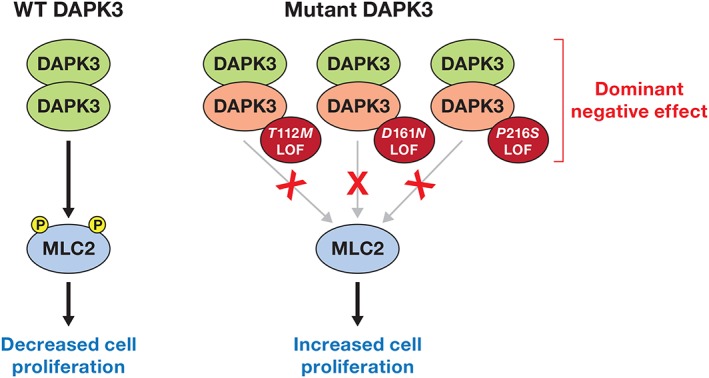Figure 2.

Suppression of tumorigenesis by DAPK3. Active wild type DAPK3 dimers directly phosphorylate MLC2 to suppress migration and proliferation and promote cellular adhesion. DAPK3 mutants act in a dominant negative manner by dimerizing with WT DAPK3 resulting in inactivation of the WT allele and suppression of MLC2 phosphorylation. Unphosphorylated inactive MLC2 in turn leads to sustained cellular adhesion, increased cell survival, and drug resistance.
